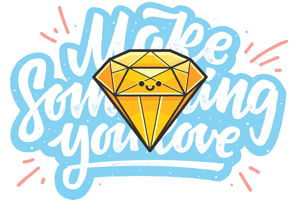Your portfolio is a story about you and your work — your expression of growth through all the obstacles, surprises, successes and failures. This is your epic. Illuminate the arc of your career and why you matter.
For the audience, your portfolio showcases your problem-solving superpowers, hard and soft skills, and your ability to reflect upon your successes and failures.
For you, the act of telling your story is just as important for your growth as the story itself. This growth, is what makes you, you.
Do it for you first, employers second.
Here is some advice to help tell your story.
Show your best work
Your portfolio is not a backlog. Curate 3–5 projects that align with the kind of work you want to be doing. Clarify what your audience seeks and accentuate how your expertise, skills and uniqueness exceed their needs. Strive for flexibility and tailor what you show to the people viewing it.
Remember, respect the time and attention of your audience. Go deep on a few, broad on the rest — quality is what matters.
Craft your narrative
Focus on compelling storytelling. Demonstrate your ability to communicate concisely with words and imagery—showing the what and telling the why.
Prioritise what information your reader needs and focus on the vital moments of the project that make it interesting. The story behind the design is often more compelling than the design itself.
Don’t let the medium get in the way.
Be honest and clear about your role
What were you responsible for? Who were your partners and how did you collaborate? What were your contributions? Unveil the team dynamics and how you facilitated to realise an outcome greater than the sum of the parts.
Highlight moments where you displayed leadership. How did this influence the project? Did it have a lasting impact on your organisation?
Share credit with your peers. Claim credit for your innovations.
Frame the problem and define the goals
You are a problem-solver. It’s critical that your empathy for the people and the problems you were solving for shines through. Clearly articulate both the business and user needs.
Discuss your view of the problem space, and your plan for the short-term and long-term. What insights did you uncover along the way? What opportunities did you spot? How did this shape your vision and strategy? How did you deal with ambiguity?
Expose how you think
Show and tell key moments of divergent and convergent thinking and output. What possibilities did you dream of? What concepts did you explore and how did you discern the great ideas from the good? Were there any assumptions you needed to operate under to move forward?
Highlight the barriers that you faced. How were you able to see beyond these barriers to communicate a bold, rational and achievable direction?
Reveal your context
Time constraints, limited resources, silos, turf wars, egocentricity, apathy, personal biases, politics and difficult personalities are only but a few of the realities that you work with over the course of a project.
Talk about what worked and what didn’t work. What specific challenges were you faced with and how did you overcome them?
Your portfolio is not an avenue for making excuses — it’s your story of how you adapted and improved upon environmental challenges to deliver great design for your users.
Present your solution and the journey
Tell the story about how your design solves a problem in the context of user goals. You should have good, compelling and thoughtful explanations that tie back to the problems you were trying to solve. Share anecdotes and critical thoughts about the tradeoffs you made.
Show your initial attempts and why they failed. Show your ability to accept that failure, how you learned from it and built upon on it iteratively. Remember, iterating is a key part of problem solving and no one expects that you got it right the first time.
Bring your designs to life by revealing the design system and the thinking behind it. Don’t just show the polished product, but show your process —the sketches, prototypes, deliverables and other artefacts you produced along the way.
Quality and an attention to detail should be conveyed in all of your work.
Celebrate your accomplishments
It’s important that you can be self-critical and assess the outcome of your work. Does the design successfully solve a problem? Is the thing that is designed useful? Does it contribute value for your users and the business? How is success defined?
Share the outcomes of the project and why you think it was or was not successful.
Reflect upon your learnings
Your portfolio should not only demonstrate what you already know, but also your capacity for learning, adapting, and growing. What worked well? What would you do differently? How did you deal with your failures? How did you deal with your team’s failures? What lessons did you learn and how did this project impact you for the better?
Demonstrate your self-awareness. Don’t fingerpoint.
Sell yourself
Your portfolio is an opportunity to paint a rich picture of yourself.
A prospective employer is looking to hire you, not your portfolio. Allow them to connect with you by revealing your motivations and values. Your reader should get a sense of what you enjoy working on, where you most shine and what value you will ultimately bring to their team.
Selling yourself through a great story helps your audience envision how you could contribute to theirs. So, get out there, do great work, and share it with the world.
"Talk about the accomplishments you’re most proud of and don’t leave out any detail that shows what you can do when the world decides to test you. That’s the portfolio of a great designer." — Jared Spool


